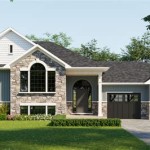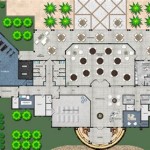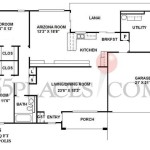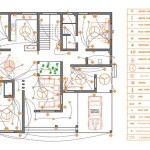```html
Create House Floor Planner: A Comprehensive Guide
Creating a house floor planner is a crucial step in any construction or renovation project. It serves as a visual representation of the layout and dimensions of a home, allowing homeowners, architects, and contractors to collaborate effectively, identify potential issues early on, and ensure that the final product aligns with the desired specifications and functionality. This article delves into the purpose, benefits, and process of creating a house floor planner, providing a comprehensive understanding of this essential tool.
Floor plans are more than just blueprints; they are the foundation upon which a home's design and functionality are built. A well-designed floor plan optimizes space utilization, facilitates comfortable living, and enhances the overall value of the property. Conversely, a poorly designed floor plan can lead to inefficiencies, inconveniences, and costly revisions later in the construction process.
Understanding the Purpose and Benefits of a House Floor Planner
The primary purpose of a house floor planner is to provide a detailed, scaled representation of a building's layout. This includes the arrangement of rooms, walls, doors, windows, and other structural elements. By visualizing the space, stakeholders can gain a clear understanding of how different areas will interact and identify potential problems before construction begins. Specifically, the benefits are multifaceted.
Improved Communication: A floor plan serves as a common language for everyone involved in the project. It eliminates ambiguity and ensures that all parties are on the same page regarding the design and layout.
Space Optimization: A floor plan allows for careful consideration of space allocation. By experimenting with different layouts, it's possible to maximize the use of available square footage and create a design that meets the specific needs of the occupants.
Cost Savings: Identifying potential problems early on can save significant amounts of money in the long run. Reworking a design on paper is far less expensive than making changes to a partially constructed or finished building.
Enhanced Design: Floor plans allow for experimentation with different design concepts. By visualizing the space in advance, homeowners can explore different styles, layouts, and features and refine their vision before committing to the final design.
Permit Acquisition: Most building permits require detailed floor plans. Having a well-prepared floor plan can streamline the permitting process and ensure that the project complies with all applicable building codes and regulations.
Methods for Creating a House Floor Planner
Several methods can be used to create a house floor planner, ranging from traditional hand-drawing techniques to sophisticated computer-aided design (CAD) software. The choice of method depends on the complexity of the project, the level of detail required, and the user's skill level and resources. The following outlines common methodologies:
Hand-Drawn Floor Plans: The traditional method involves sketching the floor plan by hand using graph paper, a ruler, and a pencil. This approach is suitable for simple projects or for creating preliminary sketches before moving on to digital tools. While hand-drawing offers a tactile and intuitive experience, it can be time-consuming and less precise than digital methods. Furthermore, making revisions to a hand-drawn floor plan can be cumbersome.
Online Floor Plan Software: Numerous online floor plan software programs are available, offering a user-friendly interface and a range of features for creating detailed floor plans. These programs often include pre-drawn templates, drag-and-drop functionality, and the ability to add furniture and fixtures. Some programs are free to use, while others require a subscription or one-time purchase. Examples include RoomSketcher, Floorplanner, and SmartDraw. These platforms typically offer 2D and 3D viewing options and allow for easy sharing and collaboration.
Computer-Aided Design (CAD) Software: CAD software provides the most comprehensive set of tools for creating professional-quality floor plans. Programs like AutoCAD, Revit, and ArchiCAD are widely used by architects and designers. CAD software offers advanced features such as precise dimensioning, layering, and the ability to create detailed 3D models. However, CAD software can be complex to learn and often requires specialized training.
Mobile Apps: Several mobile apps are available for creating floor plans on smartphones and tablets. These apps often utilize the device's camera and sensors to measure rooms and create accurate floor plans. While mobile apps may not offer the same level of detail and functionality as desktop software, they can be useful for quick sketches and on-site measurements.
Regardless of the method chosen, the process of creating a floor plan typically involves several key steps:
- Measure the existing space (or estimate dimensions for a new build).
- Draw the exterior walls to scale.
- Add interior walls, doors, and windows.
- Include fixtures such as sinks, toilets, appliances and outlets.
- Dimension the spaces to ensure accurate building.
Key Considerations for Effective Floor Plan Design
Creating an effective floor plan requires careful consideration of several factors, including the needs of the occupants, the orientation of the building, and local building codes. A floorplan can be aesthetically pleasing but functionally poor. The following are vital considerations:
Functionality and Flow: The floor plan should facilitate a smooth and logical flow of movement throughout the house. Consider how different rooms will be used and how they will connect to each other. For example, the kitchen should be located near the dining area, and bedrooms should be located in a quiet area away from the main living spaces.
Space Allocation: Allocate space based on the needs and preferences of the occupants. Consider the number of bedrooms and bathrooms required, the size of the living areas, and the need for storage space. Ensure that each room is adequately sized and proportioned to accommodate its intended use. A smaller office will require less space than a large living room.
Natural Light and Ventilation: Maximize the use of natural light and ventilation by strategically placing windows and doors. Consider the orientation of the building and the path of the sun to ensure that rooms receive adequate sunlight throughout the day. Proper ventilation is essential for maintaining a healthy and comfortable indoor environment.
Accessibility: Design the floor plan to be accessible to all occupants, including those with disabilities. Consider the width of doorways and hallways, the placement of grab bars in bathrooms, and the installation of ramps or elevators where necessary. Adhering to accessibility guidelines ensures that the home is usable by people of all ages and abilities.
Building Codes and Regulations: Ensure that the floor plan complies with all applicable building codes and regulations. These codes govern various aspects of construction, including structural integrity, fire safety, and accessibility. Consulting with a local building official or architect can help ensure compliance.
Future Needs: Consider the future needs of the occupants when designing the floor plan. Will the family grow over time? Will aging in place be a concern? Designing for future needs can prevent costly renovations later on.
Furniture Placement: Consider the placement of furniture when designing the floor plan. Ensure that there is enough space for furniture to be arranged comfortably and that there are adequate pathways throughout the rooms. Consider the scale of the furniture in relation to the size of the room.
Storage Space: Adequate storage space is essential for maintaining a clutter-free home. Incorporate closets, cabinets, and other storage solutions into the floor plan. Consider the specific storage needs of each room, such as linen closets in bathrooms and pantry space in the kitchen. Vertical storage options can maximize space utilization.
By carefully considering these factors, it is possible to create a house floor plan that is functional, aesthetically pleasing, and meets the specific needs of the occupants and the constraints of given building codes while creating an organized home.
```
Floor Plans Types Symbols Examples

House Plans How To Design Your Home Plan

House Plans How To Design Your Home Plan

Floor Plan Creator And Designer Free Easy App

Floor Plans Types Symbols Examples

House Plans How To Design Your Home Plan

How To Draw A Floor Plan Live Home 3d

Floor Plans Types Symbols Examples

House Plans How To Design Your Home Plan

Floor Plan Maker








